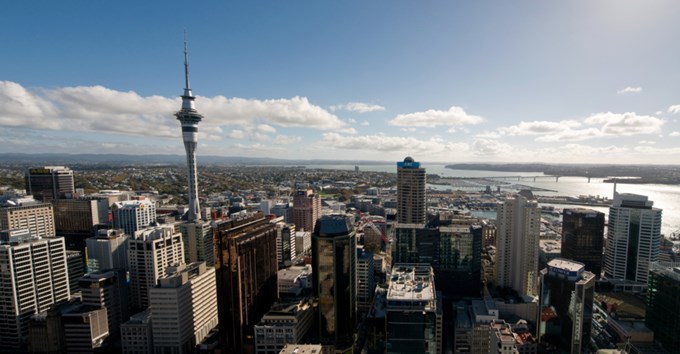Dr Fergus Tate, Technical Director – Transport at WSP Opus and former Lead Safety Advisor for Roads and Roadsides at NZTA, says speed reduction is the best tool to save lives on Auckland's roads.
Auckland aspires to be a leading international city. While it has many positive attributes that will help it attain this, the number of fatalities on its roads also speaks of a region that urgently needs a different approach.
Last year 52 people lost their lives on Auckland’s roads, a further 595 people were seriously injured. An international report* that looked at the road fatalities of 30 cities, ranked Auckland as 12th worst. We have three times the fatality rate of Stockholm and are behind London, Dublin and Melbourne.
What would be the outrage if the entire roll of two average Auckland primary schools were killed or seriously injured in a year? It would be massive and there would be a demand to do everything possible to prevent a reoccurrence of the tragedy.
Fortunately, there is something we can do: reduce road speed where required.
I’ve spent the better part of my career working in road safety and I can say with absolute confidence that the speed at which a crash happens is the number one determinate of the severity of the outcome - it is simple physics.
The safest environment for all road users is when operating speeds are compatible with that environment. In a predominantly pedestrian area, speeds need to be matched to the needs of the pedestrian.

As a rule, people don’t set out with the intention of having a crash. Granted, some deliberate illegal actions occur, but in the majority of cases crashes happen as a result of some form of mistake.
These mistakes include such things as observational errors, errors of judgement, lapses in concentration or being distracted. They can result in failure to see an approaching vehicle, misjudging the distance or speed of an approaching vehicle when entering an intersection or crossing the road, not reacting in time to an approaching curve or misjudging the negotiation speed, or being distracted for example by a cell phone.
When these failures occur, the speed at which the vehicle is travelling has a major impact on whether the situation is recoverable, the crash likelihood and most importantly, on the outcome of any resulting crash.
People simply aren’t designed to withstand impacts with or within heavy fast-moving objects. Managing impact speeds is a key to survivability - even reducing the collision speed by 5km/h makes a huge difference to the severity of the crash.
While there is a debate about the actual shape of the fatality risk versus speed curves, the key issue is that lower speeds result in fewer crashes and less severe outcomes. It’s also worth noting that when crashes involve large vehicles or older persons, the risk is higher.
We have proof that lowering the speed works. In 2009 the speed limit on Ponsonby Road was changed from 50 km/h to 40km/h. The result was a reduction of deaths and serious injury of over 50% over an eight-year average. In the same period, the rest of Auckland has seen substantial increases.
Lowering these speeds further to 30 km/h could be expected to halve the risk of death and serious injury again.
Yes, engineering improvements to roads and behaviour change programmes are also required, but these initiatives take time. Something needs to be done now to arrest the rising road toll in Auckland. If Auckland is to be a truly world-class city, it’s people need to have a safe transport environment.
Not only does a reduction in traffic speed reduce crashes and crash severity, it also reduces the barrier effects a road can have on a community, and results in lower vehicle operating costs and vehicle emissions.
* The ITF Safer City Streets Global Benchmarking for Urban Road Safety report
About Dr Tate
Dr Fergus Tate is widely acknowledged to be a leading expert in road safety in New Zealand, having spent over seven years with the NZ Transport Agency where he was the Lead Safety Advisor for Roads and Roadsides and previously the National Manager Traffic and Safety. As Technical Director – Transport at WSP Opus, Fergus provides expertise to clients to help them bring complex projects to life.


